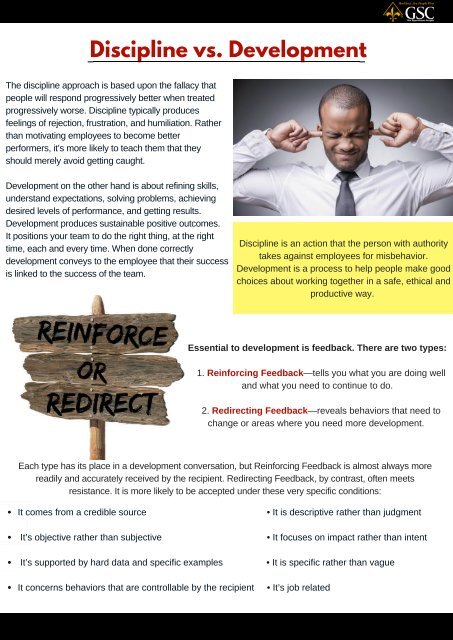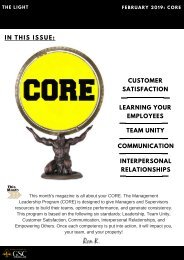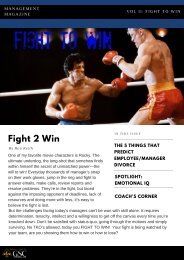Employee Performance
June 2018
June 2018
Create successful ePaper yourself
Turn your PDF publications into a flip-book with our unique Google optimized e-Paper software.
Discipline vs. Development<br />
The discipline approach is based upon the fallacy that<br />
people will respond progressively better when treated<br />
progressively worse. Discipline typically produces<br />
feelings of rejection, frustration, and humiliation. Rather<br />
than motivating employees to become better<br />
performers, it’s more likely to teach them that they<br />
should merely avoid getting caught.<br />
Development on the other hand is about refining skills,<br />
understand expectations, solving problems, achieving<br />
desired levels of performance, and getting results.<br />
Development produces sustainable positive outcomes.<br />
It positions your team to do the right thing, at the right<br />
time, each and every time. When done correctly<br />
development conveys to the employee that their success<br />
is linked to the success of the team.<br />
Discipline is an action that the person with authority<br />
takes against employees for misbehavior.<br />
Development is a process to help people make good<br />
choices about working together in a safe, ethical and<br />
productive way.<br />
Essential to development is feedback. There are two types:<br />
1. Reinforcing Feedback—tells you what you are doing well<br />
and what you need to continue to do.<br />
2. Redirecting Feedback—reveals behaviors that need to<br />
change or areas where you need more development.<br />
Each type has its place in a development conversation, but Reinforcing Feedback is almost always more<br />
readily and accurately received by the recipient. Redirecting Feedback, by contrast, often meets<br />
resistance. It is more likely to be accepted under these very specific conditions:<br />
It comes from a credible source<br />
It’s objective rather than subjective<br />
It’s supported by hard data and specific examples<br />
It concerns behaviors that are controllable by the recipient<br />
• It is descriptive rather than judgment<br />
• It focuses on impact rather than intent<br />
• It is specific rather than vague<br />
• It’s job related












